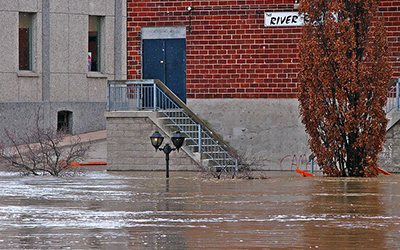
Flood hazard model calibration using multiresolution model output
S. M. Roth, B. S. Lee, S. Sharma, I. Hosseini-Shakib, K. Keller, and M. Haran
Environmetrics (17 October 2022)
DOI: 10.1002/env.2769
Abstract Riverine floods pose a considerable risk to many communities. Improving flood hazard projections has the potential to inform the design and implementation of flood risk management strategies. Current flood hazard projections are uncertain, especially due to uncertain model parameters. Calibration methods use observations to quantify model parameter uncertainty. With limited computational resources, researchers typically calibrate models using either relatively few expensive model runs at high spatial resolutions or many cheaper runs at lower spatial resolutions. This leads to an open question: is it possible to effectively combine information from the high and low resolution model runs? We propose a Bayesian emulation?calibration approach that assimilates model outputs and observations at multiple resolutions. As a case study for a riverine community in Pennsylvania, we demonstrate our approach using the LISFLOOD-FP flood hazard model. The multiresolution approach results in improved parameter inference over the single resolution approach in multiple scenarios. Results vary based on the parameter values and the number of available models runs. Our method is general and can be used to calibrate other high dimensional computer models to improve projections.
keywords: computer model; emulation–calibration; Gaussian process; Markov chain Monte Carlo; multiresolution; uncertainty quantification
additional materials:
summary slide | DOE highlight | open access manuscript